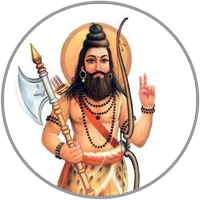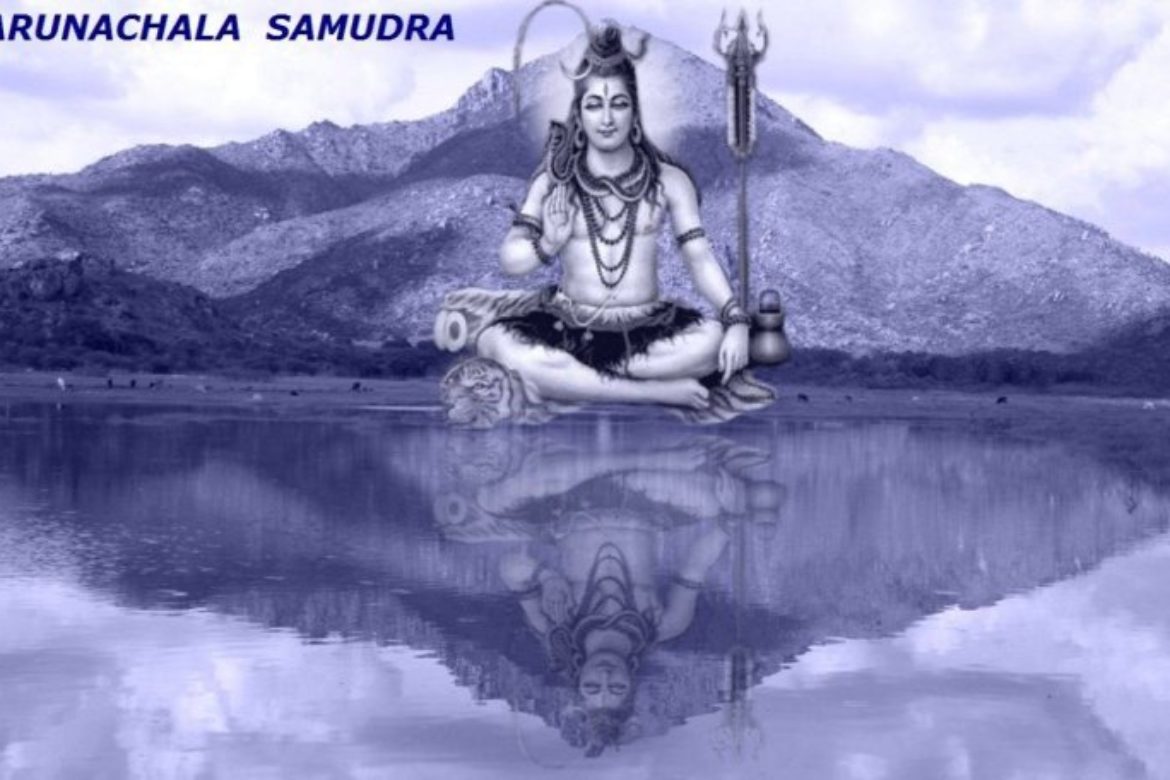Shiva A Person God or Reality
The worship of Shiva precedes the Sanatana Dharma and the worship of Shiva seems to have originated from the South of the Vindhya Mountains.
And the worship of Shiva is intriguing as a God.
One can find Shiva beibg worshiped as a Human being in the form of Nataraja and in other forms as a Human being, this mode of worship of Shiva in the north of Vindhyas is very limited when compared to the South.
In the South one can find the worship of Shiva both as a Linga and as a Human being or resembling a human being.
In the north the worship of Shiva as Linga is predominant.
And the worshio of Shiva as Ardhanaresswara form, of Shiva and Devi in one form is prevalent in the south.
Another interesting point is that the Gods as described in the Vedas do not seem to have a description as a human being.
Only their attributes are provided in the Sukthas and seem to be a reoresentation of the Principles of Nature.
Purusha Suktha drscribes the Evolution of the Universe,
The Narayana, Vishnu, Sri and Durga Sukthas describe the various aspects of the Universe.
However , the Sri Suktha calls Sri, Lakshmi as the one who resides in the
House of Sikleetha Rishi- Sikleetha
Vasame gruhe.
Excepting these lines no mention is
Made to the Gods as Humans.
The core of the Vedas is that the Reality , Brahman is without and beyond Attributes .

Nirguna.
However later concept s brought in the description of Gods in rhe image of Man in the Puranas and the Ithihasas Ramayana and Mahabharata.
Even here there is a uniqueness of Shiva.
Shiva appears, as recorded in the Tamil Classics and the Thiruvilayadal purana which describes the activities of Shiva at various points of Times while not much of this nature is found in the literature of North India.
And note the spread of Hinduism towards the East where Muruga, Subrahmanya worship is prevalent from Lanka to Australia and the spread of Shiva Cult here and also to thecwest of India from Middle East to Arctic and Russia.
However there are legends that Shiva was worshiped as a Tribal Chief.
Even today the Austrakians perform the Trinetra Dance of Shiva.
And there is a Temple for Shiva asKratha Shiva’ Shiva the Hunter in Kerala.
‘
The Indian tribes worship Shiva in their natural abode – jungles, hills, mountains, agricultural fields’ etc. It is the Hindus who brought him into temples. Shiva is always worshiped among the tribals in His presence as lingam.
In the bramhanical Hindu fold Lord Shiva has several names. Prominent among them are as follows: Shankar, Ashutosh, Shiva, Neelkantha, Jatadhari, Pasupati, Bholanatha, Viswanatha, Baidyanath, Kailashpati, Tripurari, Rameshwar, Ravaneshwar, Somnatha, Mahakal, Omkar, Nagesh, Trayambakeshwar, Chidambaram, Kedranath, Shambhu, Gauripati, Girijapati, Mahadeo, Umapati, Maulishekhar, Shashank-Shekhar, Chandrashekhar, Lingraj, Devadhideva, Hara, Bambhola. His every name makes him unique, peculiar, caring for his believers and followers but careless about himself. He does not run after the worldly affairs and luxuries. He is the divine guru. He is the sun that opens the lotuses of the hearts of great Yogis. He is most compassionate. He absorbs the devotees’ afflictions. He is the manifestation of the three worlds. He abides in bliss. He is delighted with devotees. He is forever blissful. He absolves the sins of the faithful. He lights up his devotees. He is beyond thought. He is associated with right thoughts. He is boundless. He is birth-less. He is without beginning or end. He is associated with knowledge. He is supreme in bliss and knowledge. He is slave of the devotees. He responds to the devotees. He is attentive to the devotees. He is the light of the devotees. He is a killer of devotee’s grief. He is the experience of devotees. He rescues devotes. He supports devotees. He is approachable through pure thoughts. He is the embodiment of consciousness. He has eliminated bodily passions.
From the available narratives of many tribal communities (as described in the latter part of this paper) it appears that the Hindu ancestors adopted Him much later. Gods are fathers and Lord Shiva is s father like personality for the all other gods. He is the greatest god, Mahadeo. He helps his indigenous people in all walks of life and in all geographical, ecological and natural conditions. He is malevolent. He is benevolent. He is supreme Lord. He is Lord of lords. The Taittiriya Samhitatherefore, in the form of Rudra, rightly describes Him:
“Hail to him of the drum, hail to him of the drum stick, hail to the courageous and to the creations, to him on the footpath, hail to him of the pond, and to rivulet, hail to him of the lake. Hail to him of the well. Hail to him of the rain, hail to him of the cloud, hail to him of the sunshine and to him of the storm. Hail to him of the dwelling and to the guardian of the dwelling (TS.4.5.7.)”.
Non-tribal and tribal interaction in ancient India started much earlier than the Vedic period. A minute survey of the Rig Vedareveals that these indigenous people were considered low, uncultured, mindless and substandard people and referred to asDasavarna (black colour or Dasa colour),Adavea (the godless community), Ayajyavah(non-sacrificiers), Anindra (non-believers in Indra), Murudeva(worshippers of dummy Gods), Sishnadeva (worshippers of phallic Gods), Mridhravaaka (those whose language was obscure and unintelligible),Maleecha (a non-Aryan) anas (flat nosed people) Akratuh, Avratuh, Ayyajnya, Vratya, Pani, and dasa. Here anas is a tribal andsisnadeva is the phallus god- Lord Shiva. Tribals with black skin were humiliated by the Vedic community as dasavarna where as other tribes were criticized on the basis of their flat nose. They were initially not permitted to mix up with the Hindu community but very soon it was realized that the existence of Vedic cult would not be possible without incorporating the existence of Shiva in the Vedas. And all of a sudden in the later part of Rig-Veda we see how Rudra has appeared with his all power and grace combining malevolent and benevolent characters.
The three Vedas – Rig, Sam and Yajur – were recognized as canonical and calledTrayi Vidya (the threefold knowledge). TheAtharva Veda (atharvam = charm), written later, was included in the canon only after a long struggle. Influenced by the religious and ritual practices of the tribes, which they used to practice in order to appease the gods (and many of them are still doing), it included spells and incantations for the practice of magic.
Slowly and gradually the Vedas developed six major limbs – Vedanga-s:
- a) Siksha (Phonetic Science which mainly deals with pronunciation)
- b) Vyakarana (Grammar)
- c) Nirukti (Context conclusive meaning; etymology)
- d) Chandas (Meter)
- e) Jyotisha (Time Science; astronomy & astrology)
- f) Kalpa (Rituals)
The seers and scholars who realized these aspects of knowledge from the Vedas, composed Sutras (short but potent phrases which convey a lot of meanings) on eachVedanga. Kalpa-sutra-s are of four categories, viz., Srouta (collective sacrifices), Grhya(family rituals), Dharma (occupational duties) and Sulba (building of sacrificial fireplaces, altars etc.).
According to the different levels of conditioned consciousness there are instructions in the Vedas for worship of different controllers, with the aim of reaching different destinations and enjoying different standards of sense enjoyment. Agamas(emanated scriptures) are books which are classified into five for this purpose:
| Basic nature of the Deity |
DEITY WHO CONTROLS |
BRANCH OF AGAMA
|
| Energy |
Shakti |
Shakta Agamas |
| Visible source (Sun) | Surya | Sourya Agamas |
| Controller | Ganapati | Ganapatya Agamas |
| Destroyer | Shiva | Saiva Agamas |
| Ultimate source | Vishnu | Vaikhanasa Agamas |
Slowly and gradually the Vedic seers and scholars made the place for the tribal people and their rituals and tantrikpractices in the Vedic fold. They said, for those who are below standard for Vedic purificatory process, Lord Shiva gave theTantra Shastra-s. These have two general classifications, right and left. While the right aspect contains regulations for purification for those who are grossly engaged in meat eating, intoxication and illicit sex, the left aspect contains low class activities like black magic etc.
We find some legends of Lord Shiva Among the tribals of Chotanagpur, now in Jharkhand. I will begin with the case study of the Santhal – the largest Tribal community of Jharkhand. The supreme God of Santhal is called Marang Buru, Thakur Buru, or Mahadeo. His character is basically very similar to that of Shiva. Interestingly, the great and historicalJyotirlinga of Baidyanath, popularly known as Ravaneshwar Mahadeo, is located in the heartland of Santhal at Deoghar. Many Santhals claim that it is the entry point to the Santhal Territory. It is a place where all gods and goddesses reside with Lord Baidyanath. The prominent characteristic of the Santhal religious practices is belief in and worship of spirits or bongas and worship in the sacred grove.’
There is a school of thought which states that cthe Shiva worship was drwan to Sanatana Dharma from the South and later incorporated in the Vedic and puranas.
In essence the vedas treat Shiva more as Principle than as Human Being.
But considering the numerous references to Shiva as a Human being , the spread of Sanatana Dharma by Shiva and His son Ganesha, the archaeological finds around the world,mostly among the tribes who worship Shiva as their ancestor, I am of the opinion that Shiva wa a human being and He was a realized soul.
Note that the Siddhas consider Shiva as the first Siddha.
Siddhas transcend time and Space.
The view that human beings are God is not incompatible with Hinduism..
Man is a part of the Reality, Brahman
Those who Realize the Self are elevated to God hood.
Thus Shiva was a human being who realized Self and was elevated to Godhood embodying the principles of the Universe and The Tantra Sasta, the means of realuzing Self.
Citation and references.





